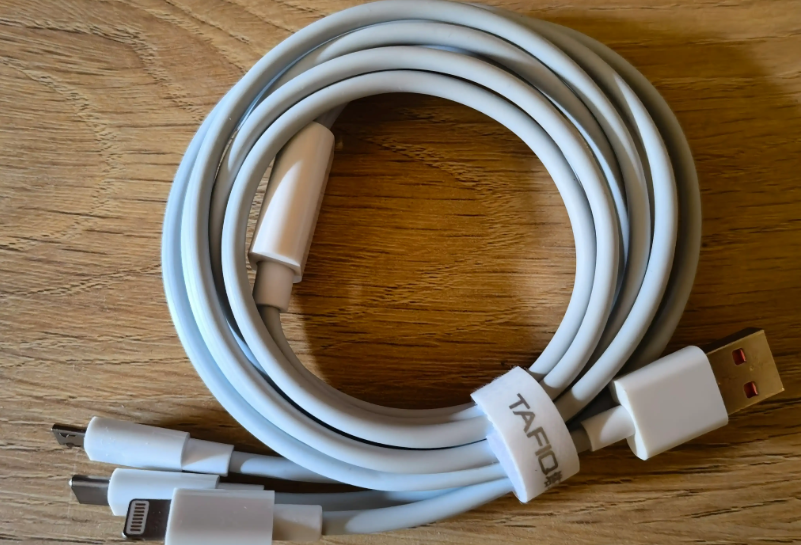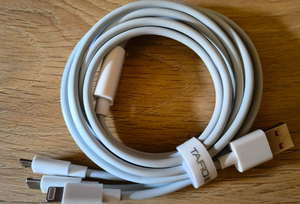
Inspection standards and inspection methods for mobile phone data cables Inspection and factory inspection services
The mobile phone data cable, as the most frequently used digital accessory in daily life, its quality directly affects the user experience and the safety of the device. The quality inspection of data cables is a systematic project, involving the entire process quality control from raw material entry to finished product exit. This article will deeply analyze the factory inspection and inspection process of data cables, the key points of quality control and the testing standards, providing a comprehensive reference guide for purchasers, quality inspectors and manufacturers.
I. Basic Knowledge of Data Cables and Pre-Inspection Preparation
(1) Technical Characteristics and Classification of Data Cables
Data cables are electronic accessories that enable data transmission and device charging through wired connections. Their core technologies include wire conductors, shielding layers, interface terminals, and chip identification modules. According to interface types, they are mainly classified as Type-C, Lightning, Micro USB, etc. According to functions, they can be divided into charging cables, data cables, fast charging cables, and other different types.
(2) Preparation for Factory Inspection and Goods Inspection
Technical document review: Check product specifications, USB-IF certification, MFi certification (Apple certification), wire UL certification, RoHS test report, REACH compliance statement
Verification standard confirmation: Clearly define the applicable national standards (GB/T related standards) and the customer's specific requirements, including electrical performance standards, mechanical performance standards, and environmental adaptability standards.
Calibration of testing equipment: Ensure that devices such as network analyzers, DC resistance testers, plug-in and pull-out life testers, insulation resistance testers, and voltage withstand testers are within their calibration validity period.
Sampling plan determination: Based on the batch size, determine the sampling quantity and acceptance criteria in accordance with GB/T 2828.1-2003, and formulate the sampling inspection plan.
II. Key Points for Data Cable Factory Audit
(1) Quality Management System Audit
Check whether the factory has established a complete quality management system (ISO9001 certification), and review the quality manual, procedure documents, and operation instructions.
Review the supplier management procedures, especially the evaluation records of key component suppliers such as wire materials, interface terminals, and chips, including supplier qualification certifications and incoming material inspection standards.
Review the production process control documents and their implementation status, with a particular focus on the control of process parameters for key procedures such as welding techniques, injection molding, and final product testing.
Evaluate the effectiveness of the control procedures for non-conforming products and the corrective and preventive measures, including the processes of marking, isolation, review and disposal of non-conforming products.
(2) Key points of on-site production inspection
Incoming material inspection area: Review the inspection records of key components (copper wires, rubber compounds, terminals, chips), and confirm the implementation of the IQC inspection standards
Welding Workshop: Evaluate welding temperature, duration, and quality control of weld points, inspect the glossiness of weld points, and identify cases of poor welding or false welding.
Injection Molding Workshop: Verify the control of injection molding process parameters and the maintenance records of molds, and confirm that the injection molded parts have no shrinkage, burrs, or other defects.
Test station: Verify the execution status of all inspection items, as well as the completeness of test records, including conduction tests, functional tests, and appearance inspections.
Aging test area: Check whether the aging time and test items meet the process requirements, and evaluate the product durability test standards.
III. Data Cable Inspection Environment and Sampling Standards
(1) Inspection Environment Standards
Visual inspection conditions:
Observation distance: 250mm - 350mm
Testing time: 5 to 10 seconds per side
Observation angle: 45° from the tabletop, adjustable by 15°
Light source requirements: D65-CLE standard light source, illuminance 1000 ± 200 LUX
Environmental parameters:
Temperature: 23 ± 3℃
Humidity: 30% - 85%
Inspector's vision: 1.0 or above (including corrected vision)
Inspecting surface: Made of acrylic or frosted glass, without reflective surface.
(2) Sampling Inspection Plan
Sampling standard: Based on GB/T 2828.1-2003 General Inspection Level II, formulate the sampling inspection plan
AQL standard:
Serious defect: AQL = 0.65
Main defect: AQL = 1.5
Secondary defect: AQL = 4.0
Sampling batch management: Ensure sampling representativeness. Sample different production batches separately.
IV. Appearance Quality Inspection Standards
(1) Shell Quality Inspection
Structural Integrity:
No cracking, deformation or scratches.
No shrinkage, stains or frayed edges.
The color is uniform and there is no color difference.
The surface treatment is uniform and flawless.
Interface Quality:
The terminals are not oxidized or rusted.
The insertion and removal force is moderate.
The identification is clear and correct.
The coating is uniform and there is no peeling off.
(2) Inspection of Wire Quality
Appearance of the wire:
No burns, no damages, no deformations
The wire diameter meets the specification requirements.
The covering layer is uniform and flawless.
There are no cracks at the reinforcement area of the net tail.
Nameplate marking:
The pasting position is correct and flat.
No missing stickers, no upside-down stickers, no raised stickers
The information is accurate and clear.
Durability meets the requirements.
V. Electrical Performance Testing
(1) Basic Function Testing
Charging Function Testing:
Carry out charging tests using the adapter connection
The charging current is in accordance with the nominal value.
Non-contact malfunctions
Fast charging protocol compatibility
Data transmission test:
File transfer rate test
Connection stability test
Compatibility testing
Transmission bit error rate detection
(2) Electrical Parameter Testing
Voltage Drop Test:
Testing under full load conditions
The pressure drop meets the standard requirements.
Stability under different load conditions
Conduction resistance test:
Test using a micro-ohmmeter
The resistance value is within the allowable range.
Contact resistance stability
Insulation resistance test:
Test the insulation performance of the wire material
Compliant with the safety regulations standards requirements
Passability of pressure resistance test
VI. Reliability Testing Items
(1) Mechanical Reliability Testing
Insertion and Ejection Life Test:
Number of tests: 5000 - 10000 times
The function is normal after the test.
Evaluation of interface wear degree
Bending test:
Make 5,000 left turns and 5,000 right turns respectively.
No circuit break occurred after the test.
Inspection of the integrity of the outer coating of the wire material
Swing test:
Load 200g, swing left and right by 45°
Number of tests: 5000 times
Verification of connection stability
(2) Environmental Adaptability Testing
High and Low Temperature Test:
High temperature: Functions normally in an environment of 55℃
Low temperature: Functions normally in an environment of -10℃
Temperature cycling test
Hydrothermal test:
Tested under a temperature of 40℃ and a humidity of 93%
The insulation performance after the test meets the requirements.
Corrosion resistance of metal components
VII. Analysis and Control of Common Defects
(1) Severe Defects
Functional Failure:
No charging, no data transmission
Identifying chip failure
Poor contact of the interface
Safety hazards:
Insulation damage
Short-circuit phenomenon
Risk of overheating
(2) Main Defects
Appearance Issues:
Obvious scratches and deformation
Severe color difference
Structural defect
Poor performance:
Charging speed is too slow.
The transmission rate does not meet the standard.
Compatibility issues
(3) Minor Defects
Appearance defects:
Minor scratch
The sign is slightly tilted.
Slight color difference
VIII. Packaging Inspection Standards
(1) Packaging Material Inspection
Inner Packaging:
The packaging materials meet environmental protection requirements.
Seismic protection measures are in place.
Packaging integrity inspection
Outer packaging:
The strength of the carton meets the transportation requirements.
The identification is clear and accurate.
Stacking test passed
(2) Identification Information Verification
Product Information:
Specification model and material code are accurate.
Production date and batch number are correct.
Certification mark is complete.
Supplier Information:
Qualified Supplier Identification
PASS label or seal is intact
The information is traceable and clear.
(III) Special Requirements
Change Identifier:
The materials for the change must be specially marked in three consecutive batches.
Carry out special packaging in accordance with communication requirements
Compliance of the change control process
Protection Requirements:
The foam pad provides adequate protection.
Special requirements shall be implemented in accordance with the written notice.
Anti-static packaging requirements
IX. Quality Document Requirements
(1) Inspection Reports
Shipping Inspection Report:
Including both full inspection items and sampling inspection items
The data is true and complete.
Inspector has signed and approved completely.
Reliability Test Report:
Including the results of all reliability tests
Complies with the product specification requirements
Test environment records are complete.
(II) Certification Documents
Product Certification:
USB-IF Certification Certificate
MFi Certification Certificate (if applicable)
Quality System Certification Certificate
Security Certification:
UL Certification Certificate
CE certification certificate
Certification certificates from other regions
X. Conclusion
The quality inspection of data cables is a multi-dimensional systematic project involving electrical performance, mechanical structure, material durability, and safety reliability. Quality inspection personnel need to have a comprehensive understanding of product standards, inspection methods, and common quality issues in order to effectively control product quality. Manufacturing enterprises should establish a complete quality management system, especially strengthening control in aspects such as raw material control, process optimization, and product inspection, to ensure that the products meet national standards and customer requirements.
Share this product

Inspection standards and inspection methods for mobile phone data cabl
Data cables, as the most frequently used digital accessory in daily life, their quality directly affects the user experience and the safety of the devices.
